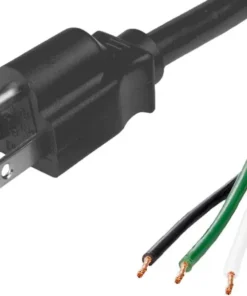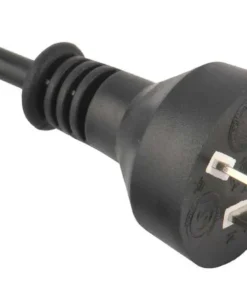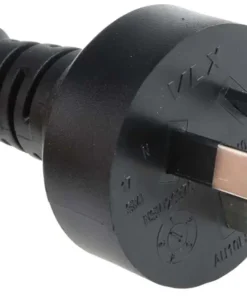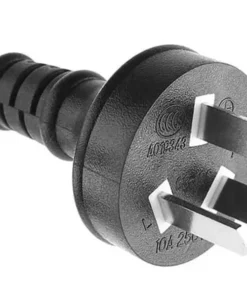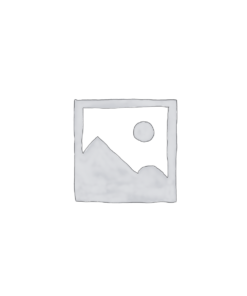The most common type C plug, rated for low power (2.5 amps), is mainly used for low-energy appliances in most European countries (except UK, Ireland, Malta, and Cyprus). This two-pronged, ungrounded plug is known as the Europlug (CEE 7/16).
Key features:
- Two 4 mm round pins spaced 18.6 mm apart.
- 10 mm long insulated sleeves on the pins.
- Compatible with sockets accepting 4.0 – 4.8 mm round contacts on 17.5 – 19 mm centers.
Limited use:
- Generally for class II applications requiring 2.5 amps or less.
- Not suitable for high-powered devices due to its ungrounded nature.
A high-power version exists:
- A less common type C plug (CEE 7/17) is rated for 10 or 16 amps.
- It has the same pin length (19 mm) as the 2.5 A version, but larger uninsulated pins (4.8 mm).
- Used for high-power appliances that don’t require earthing (e.g., hair dryers, vacuums).
- Incompatible with type N sockets found in Brazil and South Africa due to their shape.
Important note:
- While type C plugs are widely used, type C sockets are becoming outdated and illegal in many countries due to safety concerns.
- Modern buildings require grounded sockets like type E, F, J, K, L, N, or O.
- Only the sockets are becoming illegal, not the plugs.
- The 2.5 A type C plug still fits perfectly in these grounded sockets.
Summary:
Type C plugs are common in Europe but have limitations. While the plugs themselves are still in use, type C sockets are being phased out due to safety considerations.
